Count Basie: the 100 most inspiring musicians of all time
American jazz musician William Basie, (b. Aug. 21, 1904, Red Bank, N.J., U.S.—d. April 26, 1984, Hollywood, Fla.) popularly known as “Count,” was noted for his spare, economical piano style and for his leadership of influential and widely heralded big bands.
Basie studied music with his mother and was later influenced by the Harlem pianists James P. Johnson and Fats Waller, receiving informal tutelage on the organ from the latter. He began his professional career as an accompanist on the vaudeville circuit. Stranded in Kansas City,
Mo., in 1927, Basie remained there and in 1935 assumed the leadership of a nine-piece band composed of former members of the Walter Page and Bennie Moten orchestras.
One night, while the band was broadcasting on a shortwave radio station in Kansas City, he was dubbed “Count” Basie by a radio announcer who wanted to indicate his standing in a class with aristocrats of jazz such as
Duke Ellington. Jazz critic and record producer John Hammond heard the broadcasts and promptly launched the band on its career. Though rooted in the riff style of the 1930s swing-era big bands, the Basie orchestra played
with the forceful drive and carefree swing of a small combo.
They were considered a model for ensemble rhythmic conception and tonal balance—this despite the fact that most of Basie’s sidemen in the 1930s were poor sight readers; mostly, the band relied on “head” arrangements (so called because the band had collectively composed and memorized them, rather than using sheet music).
The early Basie band was also noted for its legendary soloists and outstanding rhythm section. It featured such jazzmen as tenor saxophonists Lester Young and Herschel Evans, trumpeters Buck Clayton and Harry “Sweets” Edison, and trombonists Benny Morton and Dicky Wells. The legendary Billie Holiday was a vocalist with Basie for a short stint (1937–38), although she was unable to record with the band because of her contract with another record label; mostly, vocals were handled by Jimmy Rushing. The rhythm unit for the band—pianist Basie, guitarist Freddie Green (who joined the Basie band in 1937 and stayed for 50
years), bassist Walter Page, and drummer Jo Jones—was unique in its lightness, precision, and relaxation, becoming the precursor for modern jazz accompanying styles.
Basie began his career as a stride pianist, reflecting the influence of Johnson and Waller, but the style most strongly associated with him was characterized by spareness and precision. Whereas other pianists were noted for technical flash and dazzling dexterity, Basie was known for his use of silence and for reducing his solo passages to the minimum amount of notes required for maximum emotional and rhythmic effect.

The Basie orchestra had several hit recordings during the late 1930s and early ’40s, among them “Jumpin’ at the Woodside,” “Every Tub,” “Lester Leaps In,” “Super Chief,” “Taxi War Dance,” “Miss Thing,” “Shorty George,” and “One O’Clock Jump,” the band’s biggest hit and theme song. It had continued success throughout the war years, but, like all big bands, it had declined in popularity by the end of the 1940s.
During 1950 and ’51, economy forced Basie to front an octet, the only period in his career in which he did not lead a big band. In 1952 increased demand for personal appearances allowed Basie to form a new orchestra that in many ways was as highly praised as his bands of the 1930s and ’40s. (Fans distinguish the two major eras in Basie bands as the “Old Testament” and “New Testament.”)
Browse in the Library:
| Artist or Composer / Score name | Cover | List of Contents |
|---|---|---|
| Bach J.S. Cello Suite No. 6 arr. piano solo by Joachim Raff |
 |
|
| Bach J.S. Cello Suite No.1 arr. for piano solo |
 |
|
| Bach J.S. Das Musikalisches Opfer BWV 1070 |
 |
|
| Bach J.S. Fifield Transcription Cantata BWV 147 Jesu, Joy of Man’s Desiring piano solo |
 |
|
| Bach J.S. Harpsichord Concerto A-major arr. 2 pianos | ||
| Bach J.S. J.S.- Das Wohltemperierte Klavier I (Urtext) |
 |
|
| Bach J.S. Marcello – BWV 974 Concert no. 3 | ||
| Bach J.S. My First Book of Bach favorite pieces in easy piano arrangements by D. Dutkanicz |
 |
Bach J.S. My First Book of Bach favorite pieces in easy piano arrangements by D. Dutkanicz |
| Bach J.S. Parodi Siciliano from BWV 1031 Piano solo transcription |
 |
|
| Bach J.S. Prelude XXIV | ||
| Bach J.S. Ricercar 6 BWV 1079 from “The Musical Offering | ||
| Bach J.S. Sarabande for cello | ||
| Bach J.S. Siciliano from BWV 1031 Piano solo transcription by Eugen D’Albert |
 |
|
| Bach J.S. Ten Choral Preludes KiV B 27 | ||
| BACH J.S. The Art Of Fugue Bach Fugues For Keyboard, 1715 1750 |
 |
|
| BACH J.S. The little music book of Anna Magdalena (20 easy pieces) |
 |
|
| Bach J.S. Toccata & Fugue Dminor for Piano |
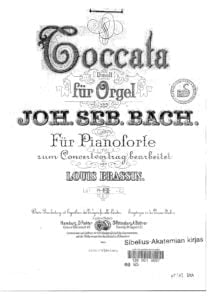 |
|
| Bach J.S. Two Transcriptions Of St. Matthew Passion For Piano Solo |
 |
|
| Bach J.S. Two-Voice Inventions |
 |
|
| Bach J.S.-Busoni BVB36 Prelude Fugue and Allegro BWV998 | ||
| Bach J.S.-Busoni BWV 933-938 | ||
| Bach J.S.-Busoni Prelude in C minor BWV 999 | ||
| Bach J.S.-BWV 1055 4 hands | ||
| Bach J.S.-Choral-BWV-639-Transcr-Busoni | ||
| Bach J.S.-Lipatti – Two Transcriptions of Bach J.S.’s Cantatas 208 | Bach-Lipatti – Two Transcriptions of Bach’s Cantatas 208 | |
| Bach J.S.-Petri – Cantata 208 “Sheep May Safely Graze” Piano solo arr. | Bach-Petri – Cantata 208 Sheep May Safely Graze | |
| Bach J.S.-Siloti- Andante from Sonata for Solo Violin BWV 1003 | ||
| Bach JS “Sheep May Safely Graze” from Cantata 208 (easy piano) |
 |
|
| Bach Liszt Prelude & Fugue In A Minor, Bwv 543 |
 |
|
| BACH Master Musicians Series by Malcom Boyd (eBook) Biography |
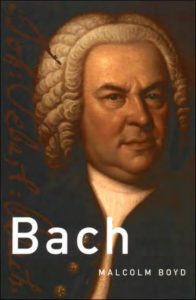 |
|
| Bach Prelude Iv Bwv 849 Wtc I (Musescore File).mscz | ||
| Bach The Goldberg Variations Cambridge Music Handbooks (eBook) |
 |
|
| Bach The Goldberg Variations Cambridge Un. Press (Book) |
 |
|
| Bach The New Bach Reader A Life Of Johann Sebastian Bach In Letters And Documents (Arthur Mendel Hans T. David Christoph Wolff) Book |
 |
|
| Bach Toccata And Fugue In D Minor (Piano Solo) (Musescore File).mscz | ||
| Bach Toccata and Fugue in D Minor BWV 565 (Piano solo arr.) |
 |
|
| Bach Toccata And Fugue In D Minor Bwv 565 (Piano Solo Arr.) (Musescore File).mscz | ||
| Bach Two Part Inventions (No. 1 Bwv 772) (Musescore File).mscz | ||
| Bach-Bauer Die Seele Ruht..Cantata 127 for piano solo | ||
| Bach-Busoni – Chaconne D minor arr. piano solo |
 |
|
| Bach-Busoni Ich Ruf’ Zu Dir Herr Bwv 639 Piano Solo Arr. (Musescore File).mscz | ||
| Bach-Gouin – Harpsichord Concerto in F Minor (Arioso) BWV1056 piano |
 |
|
| Bach-Rummel Ertodt-Uns BWV22 |
 |
|
| Bach-Siloti – Praeludium In B Minor BWV 855a | Bach-Siloti – Praeludium In B Minor Bwv 855a | |
| Bach-Siloti – Praeludium In B Minor Bwv 855a (Musescore File).mscz | ||
| Bach-Siloti Transcription of Bach’s Air from Suite for String Orchestra No.3, BWV 1068 | ||
| Bach-Stradal Trio Sonata No 4 in E minor BWV 528 |
 |
|
| Bach, Johann Sebastian – Complete Lute Music (transcribed for Guitar) |
 |
|
| Bach, J. S. Concert In D Minor Bwv 1043 For Two Violins And Piano Musescore File.mscz | ||
| Bach, J.S. Jesus Bleibet Meine Freude Easy Guitar Arr. Jesu, Joy Of Man’s Desiring Cantata Nr. 147 | Bach, J.S. – – Jesu Bleibet Meine Freude Guitar arr. | |
| Bach, J.S. Jesus Bleibet Meine Freude Guitar Arr. Jesu, Joy Of Man’s Desiring Cantata Nr. 147 | Bach, J.S. Jesus Bleibet Meine Freude Guitar Arr. Jesu, Joy Of Man’s Desiring Cantata Nr. 147 | |
| Bach, J.S. Orchestral Suite No. 1 In C Major Bwv 1066 Passepied (Easy Piano Solo) |
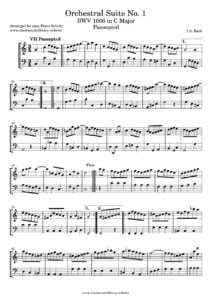 |
|
| Bach, J.S. Arioso For Piano Solo BWV 156 |
 |
|
| Bach, J.S. For Electric Guitar [Guitar SongBook] |
 |
Bach, J.S. For Electric Guitar |
| Bach, J.S. Myra Hess Chorale from Cantata 147 Jesu Joy Of Man’s desiring Hess Myra piano solo Arrangement |
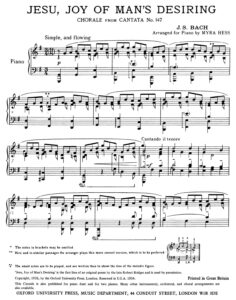 |
|
| Bach, J.S. – Jesus bleibet meine Freude Guitar arr. Jesu, Joy of Man’s Desiring Cantata Nr. 147.mscz | ||
| Bach, J.S. – Jesus_bleibet_meine_Freude_Cantata_Bwv147_10_Choral SATB with Piano by Johann_Sebastian_Bach.mscz | ||
| Bach, J.S. – Toccata and Fugue in D Minor (Piano Solo) |
 |
|
| Bach, J.S. Arioso (Guitar) from Cantata BWV 156 Guitar arr. by Per Orlov Kindgren |
 |
|
| Bach, J.S. Awake, tu us the Voice is calling – Wachet Auf, ruft uns die Stimme Piano solo arr. (Borwick) |
 |
|
| Bach, J.S. Chorale from Cantata 147 Jesu Joy Of Man’s desiring Easy piano solo Arr. |
 |
|
| Bach, J.S. Dinu Lipatti Pastorale in F ( Piano solo transcription) |
 |
|
| Bach, Johann Sebastian (bio book LUX-Lesebogen) (Deutsch-German) Biography |
 |
|
| Bach, JS Partitas Partita 1 |
 |
|
| Bach’s Well-tempered Clavier The 48 Preludes and Fugues (Book ) David Ledbetter |
 |
|
| Bachianas Brasileiras No. 5 (Heitor Villa-Lobos) | ||
| Bachianas Brasileiras No. 5 (Heitor Villa-Lobos) 2 pianos | ||
| Back To The Future Music from the Motion Picture Soundtrack Piano Vocal guitar |
 |
Back To The Future |
| Backstreet Boys – All I Have To Give | ||
| Backstreet Boys – As Long As You Love Me | ||
| Backstreet Boys – Drowning | ||
| Backstreet Boys – How Did I Fall In Love With You | ||
| Backstreet Boys – I Need You Tonight | ||
| Backstreet Boys – I Want It That Way | ||
| Backstreet Boys – Incomplete | ||
| Backstreet Boys – Quit Playing Games With My Heart | ||
| Backstreet Boys – Show Me The Meaning Of Being Lonely | ||
| Backstreet Boys As Long As You Love Me |
 |
|
| Backstreet Boys Backstreets Back |
 |
|
| Backstreet Boys Black Blue |
 |
|
| Backstreet Boys Drowning |
 |
|
| Backstreet Boys Everybody |
 |
|
| Backstreet Boys I Want It That Way |
 |
|
| Backstreet Boys Shape Of My Heart |
 |
|
| Baden Powell Manha De Carnaval Guitar Tablature Tabs |
 |
|
| Baden Powell – So Por Amor (Guitar arr. sheet music with TABs) | Baden Powell – So Por Amor (Guitar arr. sheet music with TABs) | |
| Baden Powell – Samba Do Aviao (Jobim) Guitar arr |
 |
|
| Baden Powell – Samba Em Preludio Guitar TAB |
 |
|
| Baden Powell – Serenata Do Adeus Guitar TABs |
 |
|
| Baden Powell Complete Brazil On Guitar transcriptions with Tablature |
 |
Baden Powell complete sheet music |
| Baden Powell Contemporary solo guitar (Book In Japanese) |
 |
|
| Baden Powell Prelude In A Minor (guitar) |
 |
|
| Baden Powell Retrato Brasileiro Choro Lento (Guitar) |
 |
|
| Baden Powell Songbook – Volume 1 (Guitar) |
 |
Baden Powell 1 |
| Baden Powell Songbook – Volume 2 (Guitar) |
 |
Baden Powell 2 |
| Baden Powell Songbook Volume 3 (Guitar) |
 |
Baden Powell songbook 3 |
| Badfinger – No Matter What |
 |
|
| Baghdarsaryan, Eduard 24 Preludes For Piano |
 |
|
| Baker’s Biographical Dictionary Of Popular Musicians 1990 Complete Vol 1 A L and Vol 2 M Z |
 |
|
| Balada Para Alessandro (Raul Di Blasio) | ||
| Balázs Havasidom Freedom Piano Solo Sheet Music |
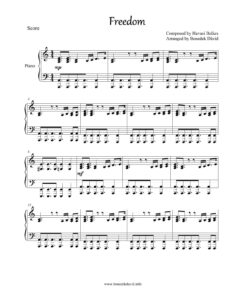 |
|
| Ballad No Name (William Joseph) | ||
| Ballade No. 1 In G Minor (Musescore File).mscz | ||
| Ballads Big Book Of Ballads 2nd Edition Piano Vocal Guitar |
 |
Ballads Big Book Of Ballads 2nd Edition Piano Vocal Guitar |
| Ballads For Classical Guitar |
 |
Ballads For Classical Guitar |
| Ballads Really easy piano (24 great songs) |
 |
Ballads Really easy piano (24 great songs) |
| Ballads The Big Book Of Ballads 3rd Edition Piano Vocal Guitar |
 |
Ballads The Big Book Of Ballads 3rd Edition Piano Vocal Guitar |
| Bambina (Lara Fabian) | ||
| Banana Boat Day-O – Guitarr Arr. With Tabs (Traditional Jamaican Folk Song (Sheet Music) |
 |
|
| Banana Boat Day-O – Guitarr Arr. With Tabs (Traditional Jamaican Folk Song (Sheet Music)) (Musescore File).mscz | ||
| Banana phone (Raffi) | ||
| Bangles – Eternal Flame | ||
| Bar Piano Susi’s – Band 1 – Swing Evergreens and Pop Classics by Susi Weiss |
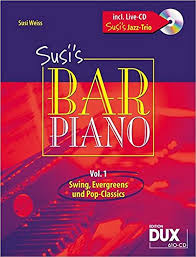 |
Bar Piano Susi’s – Band 1 – Swing Evergreens and Pop Classics by Susi Weiss |
| Bar Piano Susi’s – Band 2 – Swing Evergreens and Pop Classics by Susi Weiss |
 |
Bar Piano Susi’s – Band 2 – Swing Evergreens and Pop Classics by Susi Weiss |
| Bar Piano Susi’s – Band 3 – Swing Evergreens and Pop Classics by Susi Weiss |
 |
Bar Piano Susi’s – Band 3 – Swing Evergreens and Pop Classics by Susi Weiss |
| Bar Piano Susi’s – Band 4 – Swing Evergreens and Pop Classics by Susi Weiss |
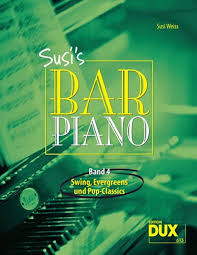 |
Bar Piano Susi’s – Band 4 – Swing Evergreens and Pop Classics by Susi Weiss |
| Bar Piano Susi’s Merry Christmas by Susi Weiss |
 |
Bar Piano Susi’s Merry Christmas by Susi Weiss |
| Bar Piano, Susi’s – Band 5 – Swing, Evergreens and Pop Classics by Susi Weiss |
 |
Bar Piano, Susi’s – Band 5 – Swing, Evergreens and Pop Classics |
| Barbara Livre D’or 18 Chansons Partition Musicale |
 |
Barbara Livre D’or 18 Chansons Partition Musicale |
| Barbara Arens Moonbeams |
 |
The Basie orchestra of the 1950s was a slick, professional unit that was expert at sight reading demanding arrangements. Outstanding soloists such as tenor saxophonists Lucky Thompson, Paul Quinichette, and Eddie “Lockjaw” Davis and trumpeters Clark Terry and Charlie Shavers, figured
prominently. Singer Joe Williams, whose authoritative, bluesinfluenced
vocals can be heard on hit recordings such as “Every Day I Have the Blues” and “Alright, Okay, You Win,” was also a major component in the band’s success. Arrangers Neal Hefti, Buster Harding, and Ernie Wilkins defined the new band’s sound on recordings such as “Li’l Darlin’,”
“The Kid from Red Bank,” “Cute,” and “April in Paris” and on celebrated albums such as The Atomic Mr. Basie (1957).
The 1950s band showcased the sound and style Basie was to employ for the remainder of his career, although there were to be occasional—and successful—experiments such as Afrique (1970), an album of African rhythms and avant-garde compositions that still managed to remain faithful to the overall Basie sound.
Throughout the 1960s, Basie’s recordings were often unremarkable, but he remained an exceptional concert performer and made fine records with singers Ella Fitzgerald, Sarah Vaughan, and Frank Sinatra. When jazz record producer Norman Granz formed his Pablo label in the 1970s, several established jazz artists, including Basie, signed on in order to record unfettered by commercial demands. Basie benefited greatly from his association with Granz and made several recordings during the ’70s that rank among his best work.
He recorded less often with his big band during this era (although when he did, the results were outstanding), concentrating instead on small-group and piano-duet recordings. Especially noteworthy were the albums featuring the duo of Basie and Oscar Peterson, with Basie’s economy and Peterson’s dexterous virtuosity proving an effective study in contrasts. Many of Basie’s albums of the ’70s were Grammy Award winners or nominees.
Suffering from diabetes and chronic arthritis during his later years, Basie continued to front his big band until a month before his death in 1984. The band itself carried on into the next century, with Thad Jones, Frank Foster, and Grover Mitchell each assuming leadership for various intervals. Basie’s autobiography, Good Morning Blues, written with Albert Murray, was published posthumously in 1985. Along with Duke Ellington, Count Basie is regarded as one of the two most important and influential bandleaders in the history of jazz.
Best site for sheet music download.
Count Basie and his Orchestra live at the North Sea Jazz Festival • 13-07-1979 • World of Jazz
The Orchestra: • Count Basie: piano • John Clayton, bass • Butch Miles, drums • Freddie Green, guitar, • Sonny Cohn, Pete Minger, Ray Brown, Paul Cohen, trumpet • Bill Hughes, Mel Wanzo, Mitchell Wood Jr, Dennis Wilson, trombone • Eric Dixon, Charlie Fowlkes, Kenny Hing, Bobby Plater, Danny Turner, saxophone • Dennis Rowland, vocals
The repertoire: Wind Machine Shiny Stockings John The III There Will Never Be Another You Good Time Blues April In Paris I Can’t Get Started In A Mellotone Easy Living 9.20 Special Good Mileage Splanky Recorded on 17 July 1979 at the Congresgebouw, The Hague, the Netherlands by AVRO TV
